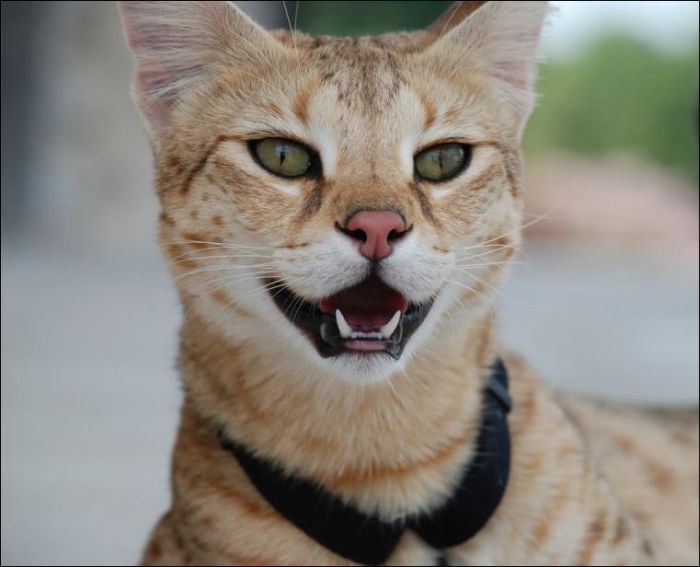|
|
Savannah Cat
|
The coat of a Savannah depends a lot on the breed of cat used for the domestic cross. Early generations have some form of dark spotting on a lighter coat, and many early breeders employed "wild" looking spotted breeds such as the Bengal and Egyptian Mau for the cross to help preserve these markings in later generations. The International Cat Association (TICA) breed standard calls for brown spotted tabby (cool to warm brown, tan or gold with black or dark brown spots), silver spotted tabby (silver coat with black or dark grey spots), black (black with black spots), and black smoke (black tipped silver with black spots) only. In addition, the Savannah can come in nonstandard variations such as the classic or marble patterns, snow coloration (point), and blue or other diluted colors derived from domestic sources of cat coat genetics. Most breeders are trying to cull these non-standard colours out of the gene-pool, by selling non-standard coloured cats as pets, but some Savannah Breeders are interested in working with these colours to introduce them as new traits.
The overall look of an individual Savannah depends greatly on generation, with higher-percentage Savannah cats often having a more "wild" look. The domestic breed that is used will influence appearance as well. The domestic out-crosses for the Savannah breed that are permissible in TICA are the Egyptian Mau, the Ocicat, the Oriental Shorthair, and the Domestic Shorthair. In addition, some Savannah breeders use "non-permissible" breeds or mixes such as Bengal (for size and vivid spotting) and Maine Coon cats (for size) for the domestic parentage, but these "non-permissible" outcrosses can bring many unwanted genes as well. Outcrosses are rarely used these days, as there are now many fertile males available, and as a result, most breeders are exclusively doing Savannah-to-Savannah breedings. The main exception would be when using a Serval to produce F1 cats, and even then breeders prefer to use a Savannah with the Serval, rather than a non-savannah female.
A Savannah's wild look is often due to the presence of many distinguishing Serval characteristics. Most prominent of these include the various color markings, tall deeply-cupped wide rounded erect ears, very long legs, fat puffy nose and hooded eyes. The bodies of Savannahs are long and leggy—when a Savannah is standing, their hind-end is often higher than their prominent shoulders. The small head is taller than wide, and they have a long slender neck. The backs of the ears have ocelli, a central light band bordered by black, dark grey or brown, giving an eye-like effect. The short tail has black rings, with a solid black tip. The eyes are blue as a kitten (as in other cats), and may be green, brown, gold or a blended shade as an adult. The eyes have a "boomerang" shape, with a hooded brow to protect them from harsh sunlight. Ideally, black or dark "tear-streak" or "cheetah tear" markings run from the corner of the eyes down the sides of the nose to the whiskers, much like that of a cheetah.
Most F1 generation Savannahs will possess many or all of these traits, while their presence often diminishes in later generations. Being a newly developing, hybridized-breed of cats, appearance can vary far more than cat owners may be used to.
|
|









